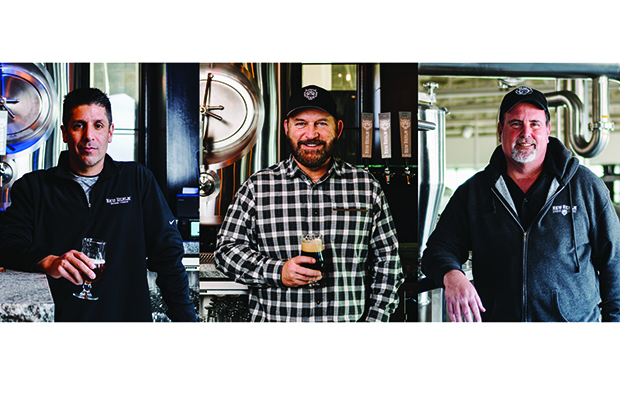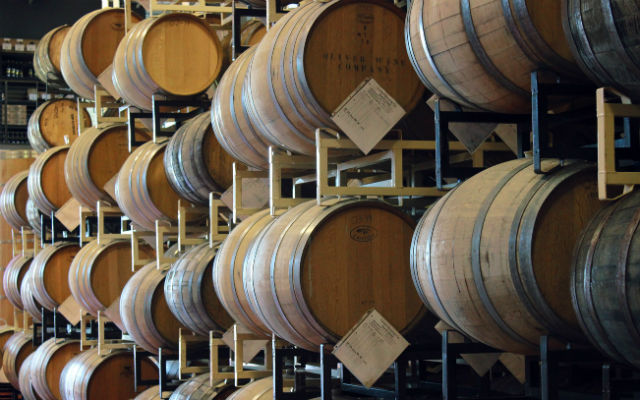
Setting goals and accomplishing them are two different tasks, and each year combining the two can be a challenge. Sometimes it comes down to understanding that your goals were too far off the mark, while other times you realize the goals set aren’t going to match what the market is becoming. Playing that guessing game and being nimble to adjust can be a way to stay successful in the coming year.
Brewer spoke with breweries that shared some insight into the plans they had at the start, how they adapted for 2019 and what they learned along the way as they prepare for the coming year.
For some breweries like New Realm, 2019 was a year of finding unexpected growth areas. From a growth perspective, the Atlanta brewery is far ahead of its initial volume projections.
“We didn’t anticipate having capacity issues in our first year,” said co-founders Bob Powers, Carey Falcone, and Mitch Steele. The team did not anticipate expanding into Virginia with a second location.
“The goal was always to try and put ourselves in a position to be able to do what we love, stay true to our core values and hope that people liked our beers and the way we approached the business,” they said. “We don’t think any of us anticipated that in our second year we would have two breweries and over 300 employees.”
Iowa’s Toppling Goliath added a restaurant, and it totally changed the dynamics of how brewery founder Clark Lewey and his hospitality team have to function.
“People have very high expectations with food and service,” he said. “Now, instead of operating as a brewery taproom, the taproom operates as a restaurant that serves our beer along with high-quality food.”
Ramping up to a larger volume of production while maintaining the taste of small-batch beers was something that Lewey addressed as a learning curve that Toppling Goliath had to grow into.
“We have an extensive sensory analysis program to ensure the scaling up of recipes stays true to the components of taste and aroma we are trying to achieve for each style of beer we produce,” he said.
When New Realm first opened, it rolled out a West Coast IPA; an Imperial IPA; a hoppy Pilsner; a Coffee Porter and a Pale Ale.
“Our on-site customers and retailers continue to ask ‘what’s new this week?’” they recalled. This caused the brewery to focus quickly on innovating and expanding its portfolio.
“It also caused us to run out of capacity more quickly,” they said. “Since we are space-constrained in our Atlanta brewery, and consumers were clearly looking for innovation and variety, we quickly ran up against limited stank space for new brites or fermenters in our brewery.”
Purchasing the Green Flash facility in Virginia allowed New Realm to add capacity and expand the brewing team.
“Bringing on Evan Chamberlain (previous head brewer from Green Flash) and building a second team of brewers in Virginia Beach, expanded our ability to collaborate internally and add beers such as our Wooded Reserve barrel-aged series, multiple hazy IPAs and a line of fruited kettle sours.”
“It helped that we have brewers with long brewing histories and deep experience,” they added. “We converted our Atlanta brewery into an innovation brewery.”
So Steele and the brew team along with Head Brewer Tyler Downey focused on variety and consistency, leveraging the two brew houses and QA lab to produce over 107 beers in the brewery’s first year.
“This resulted in several experimental beers being tweaked over time and ultimately surfacing as a core brand,” the New Realm founders said.
The biggest challenge has been to get distributors to see where the market is going, pointed out DuClaw Brewing founder Dave Benfield.
“They tend to focus on what the market is at a moment in time, versus where it’s going to be,” he said, “so figuring out how to show them the way has been important to our growth, since we are focused on innovating and staying ahead of trends as much as possible.”
Another challenge for the Rosedale, Maryland brewery is keeping up with production, particularly with the popularity of sours, which take longer to brew.
“We are always innovating recipes, styles, production processes to keep up with both the trends and production,” Benfield said. “[It’s] a good problem to have.”
Distributors, retailers, and consumers all want to know both what to expect from suppliers, and yet also still be impressed and discovering new products.
“A game-changer for us has been our 16-ounce Stout, Double IPA and sour series that release every eight weeks,” Benfield said. “The consistency in timing and surety of supply with our pre-order system for distributors, paired with the innovation in the beers themselves has helped us to stand out with each audience and we’ve seen growth there.
“With new distributors coming on board and growth with existing relationships, we anticipate this growth to continue into next year.”
DuClaw has also begun making sour — or tart — IPAs early in the year, and the appetite for that style has picked up serious steam to the point where its added the brand Strawberry Letter 23 to its core lineup, and DuClaw will always have a seasonal tart IPA online as well.
New Realm was on track to brew and sell almost 17,000 barrels in 2019. The growth the brewery experienced in its second year has allowed it to expand the brewing team, which is driving innovation. As a result, it has been able to introduce a line of barrel-aged beers, sours, experimental DIPAs, collaborations, and other limited releases.
The trip explained they are also expanding within the state of Virginia.
“It’s been over a year now since we entered the state and focused on the Hampton Roads area,” they said. “Consumer response has been far above our expectations so we have decided to slowly expand in Virginia outside of the Hampton Roads area in 2020.
“Overall I would say that expanding our portfolio has driven growth in 2019. We have three brewhouses in our two breweries. Mitch has encouraged each brewer to develop beers that have been served in our taprooms, that go through multiple rounds of brewing trials and sensory analysis, QA analysis and subsequent recipe adjustments by the brewing teams. This has allowed us to offer at least two new beers every week and some of these beers have ended up as seasonal or core brands for us.”
Two new IPAs were introduced at the end of last year. One is a New England-style IPA, Hazy Like a Fox, that was created on a 5-bbl system and underwent multiple revisions before it became a top seller in the taproom and found its way into draft and cans at retail. The other was a version of an East Coast IPA called Hoptropolis. With lower ABV and IBUs than the West Coast IPA, it is rich with hop character and has tropical peach, pear and pineapple notes.
“We also expanded distribution on our Euphonia Pilsner, which recently won the Virginia Craft Beer Cup, and introduced a Lager called United Craft Lager,” they said. “This beer has done surprisingly well and added to our growth in 2019.
“It is much different than any other beer we have. It is very complex, yet sessionable, with lower IBUs and ABV than our Pilsner.”
So how did 2019’s fluctuation help spur these breweries forward?
The addition of tanks has allowed Toppling Goliath to increase its distribution footprint. But Lewey said that despite seeing strong growth, he and his team have to continue to keep their noses to the grindstone just like any up-and-coming brewery since competition can be rough.
“We have a continuous focus on process improvement and innovation,” he said. “We are always planning for the future with that as a driver.“
New Realm has tried to stay focused on what the trio of founders have set out to do.
“Our focus on quality beer, innovation, building a great culture and supporting our community has not changed and never will,” they told Brewer. “We always said we would not ship beer to markets that we are not brewing in. We have stayed focused on being a part of the communities that we live, brew and play in.”
They said as craft beer fans, New Realm is always keeping a close eye on how the craft beer business trends develop across the country.
“We are excited to learn about and brew new styles of beer,” they said. “We’ve been running trials using mid-Atlantic and Southeast craft maltsters; we’ve been exploring low-calorie/low-carb beers, and seltzers.
“And of course new hop varieties drive almost all our innovation efforts for hoppy beers.”
The New Realm team feels beer fans will incline to continually seek out new beers, as will the interest in drinking locally-brewed beers.
“Every generation seems to latch onto a style they call their own. For a while it was hoppy, bitter and dry IPAs, now it’s hazy, juicy New England IPAs,” they said. “Many people have been saying that Pilsners and other types of Lager may be the next “big thing” but we don’t honestly know.
“So for us, we need to pay attention and act when a new trend starts to emerge.“Lewey echoed some of those crystal-ball predictions.
“Quality and freshness. Hyperlocal. Mixing beers during a session to include multiple styles, especially lower ABVs,” he said. “This is the new golden age of beer. Our industry will never go back to the doldrums of the days when macro Lager or imports were the only choices.
“Pay attention to your quality and do not compromise that. We all stumble, but the ability to get up and succeed is possible if you can genuinely say that your team works hard every day to improve what needs to be improved, and immolate what you do well.”





Be the first to comment